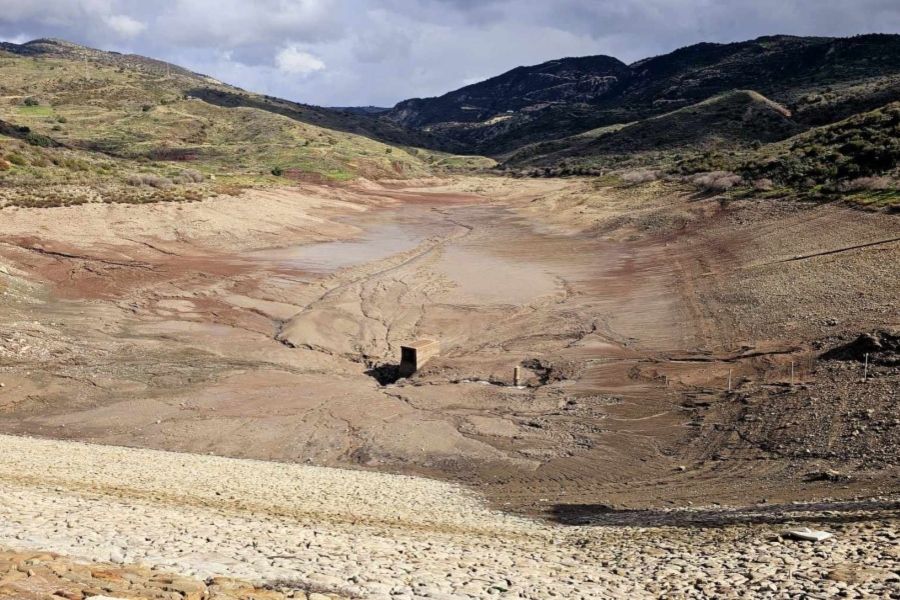
A month ago, specifically on January 23, the Director General of the Ministry of Agriculture officially announced an environmental disaster: the drainage of the Mavrokolympos dam due to a technical failure that could not be repaired. However, alongside the loss of 1.4 million cubic feet of water, it seems that a blow to Cypriot fauna was also recorded.
According to information received by the Chairman of the Parliamentary Environmental Committee, Charalambos Theopemptou, several hundred bats that were roosting in the dam’s drainage pipe, which is located in a Natura 2000 area, have been killed. This is not one of the many mammals but a unique protected species in Europe, found only in Cyprus, and is protected by national legislation and the European Habitats Directive.
"The authorities were aware"
The species in question is the fruit bat, the largest in size and the only one of the 19 species found in our country that does not feed exclusively on insects, as its diet primarily consists of fruits. However, this is not its most well-known name, as the older generations will confirm. So if you have heard the word "nychtopapparos," now you know where it came from.
The population of this unique species in the Cypriot and, by extension, European fauna has decreased by several hundred since the drainage gate of Mavrokolympos was opened. This led Charalambos Theopemptou to submit a question to the Minister of Agriculture, Rural Development, and Environment, under the following premise, as he notes: the prior knowledge of the Department of Environment about the presence of the protected bats in the pipe before the Water Development Department proceeded with the drainage of the dam.
Theopemptou to the minister
The question from the Movement of Ecologists – Citizens' Alliance MP, dated February 17, states the following, “I have been informed that within the drainage pipe of the Mavrokolympos dam, several hundred fruit bats Rousettus aegyptiacus were residing, something the Department of Environment was aware of beforehand, as the Mavrokolympos dam is included in the Natura 2000 area of Koi̱li̱ Mavrokolymbos.”
Charalambos Theopemptou continues, “I ask the responsible Minister to inform the House of Representatives whether a proper environmental impact assessment was conducted before the Water Development Department proceeded with the draining of the dam that led to the deaths of hundreds of fruit bats.”
What does the relevant legal framework provide? According to the Law on the Protection and Conservation of Nature and Wildlife of 2003, any persecution or disturbance of any species of bat is illegal and punishable by a heavy fine or imprisonment. In Cyprus, however, the fundamental question is not what the laws provide, but who enforces them and how many are supervised.
By poisoning and weapons
The nychtopapparos is an endangered species as its populations have significantly declined due to habitat destruction and methods previously used by humans to kill it. For much of the 20th century, during the period of British colonial administration in Cyprus, there were campaigns against the species, such as poisoning in caves and even the use of firearms.
This specific bat had been considered harmful to crops since it is a frugivorous species. This perception was adopted by the relevant authority of the Republic of Cyprus until 1983 when it was abandoned. However, as the Forestry Department later explained, the nychtopapparos, by consuming only ripe and overripe fruits, which are often unsuitable for the market, contributes to reducing the spread of harmful agricultural insects such as the Mediterranean fruit fly.
This article was translated from its original Greek.































